Defining the IFGA Snakeskin Guppy
By Bryan Chin
This article discusses what qualifies as an IFGA Snakeskin guppy. This applies to the IFGA Variegated Snakeskin and Solid Snakeskin classes. Big thank you to Tom Allen for working with me on this article.
The Snakeskin must have a body with distinct “chain-link” and/or rosette pattern over a minimum of 60% of the body. Fish displaying the vertical stripes, bars or cobra bars are not considered a snakeskin pattern.
When we think of a chain-linked pattern we think of a fence made of wire in a consistent diamond-shaped mesh pattern but it is more loosely defined for a snakeskin guppy. It is a combination of intertwining iridescent lines that curl and bend against a darker background. It is expressed on the body of the guppy below.
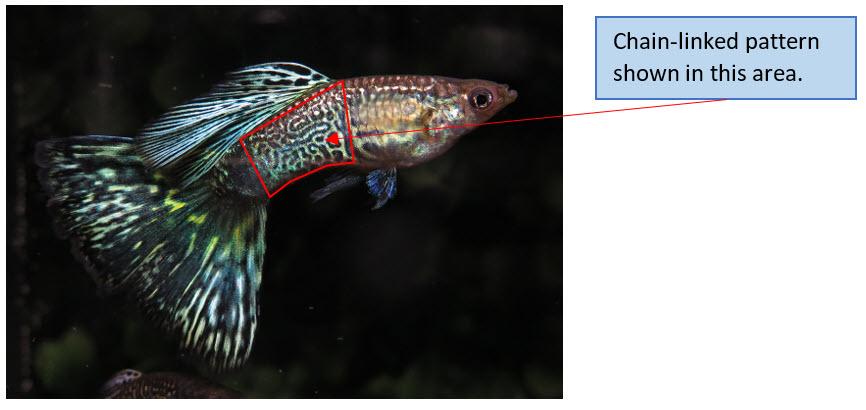
Arosette pattern is a pattern where the iridescent lines circle around an iridescent dot. You will often see rosette and chain-linked patterns on the same guppy as seen below.
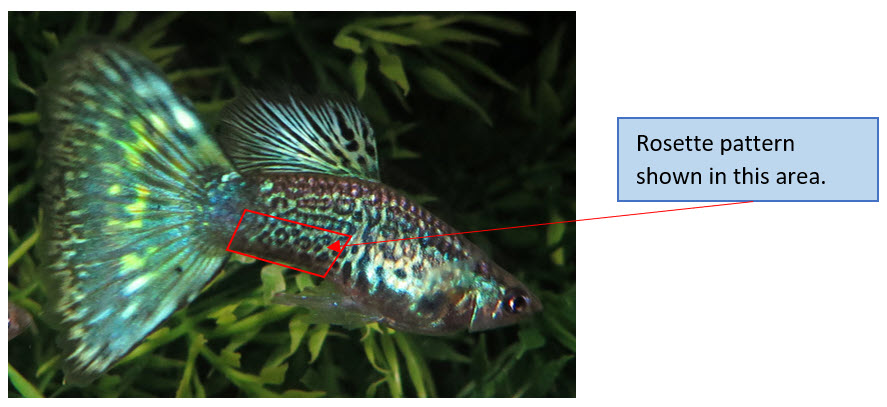
In evaluating if a guppy can qualify as a snakeskin we have to consider if the body has a least 60% of its area has snakeskin pattern. The male below lacks snakeskin pattern in two areas.
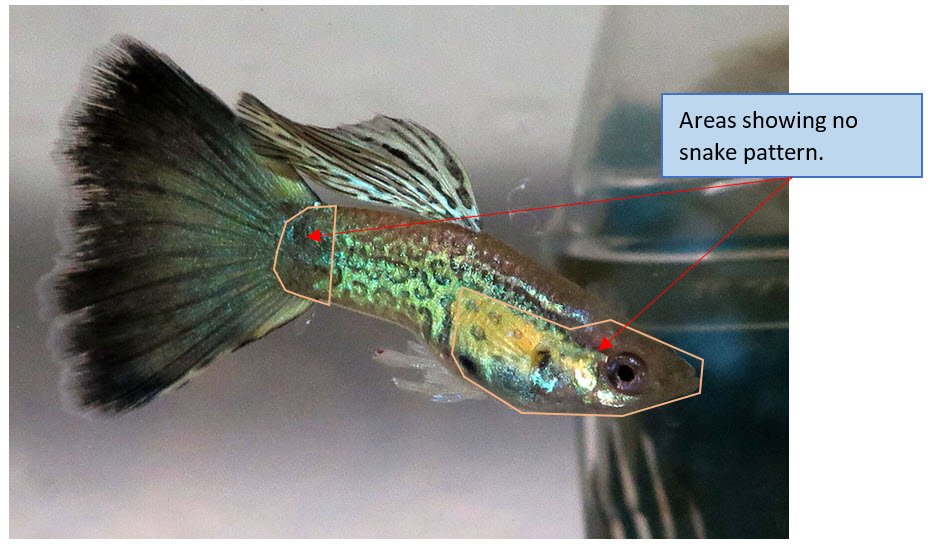
A grid pattern is overlayed to assist in visualizing areas covered and not covered with snakeskin pattern.
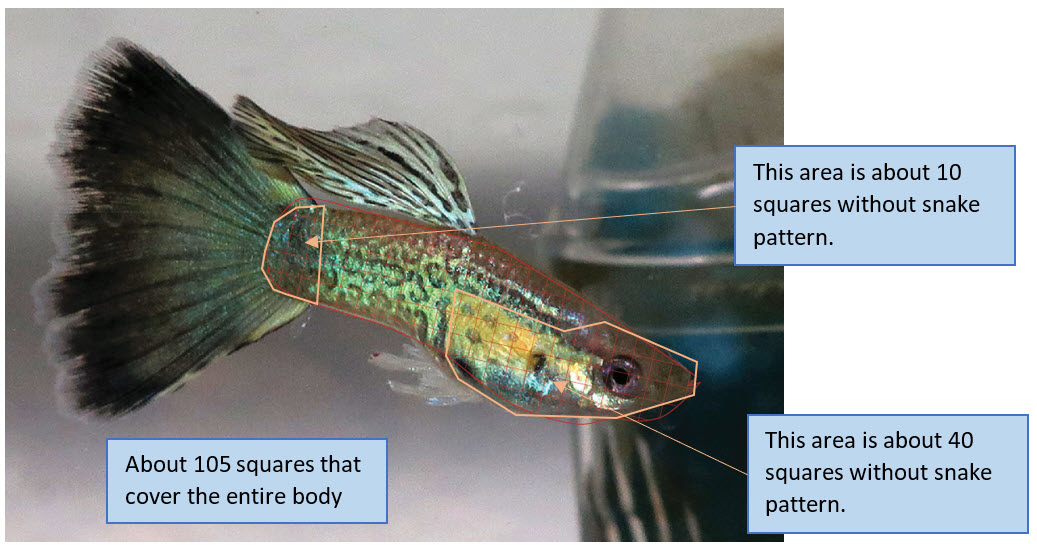
Taking a percentage of the area that is without snakeskin pattern: (10+40)/105 ≈ 48%
This guppy then has only 52% of the body area with snakeskin pattern which would be disqualified if entered in the solid snakeskin IFGA color class. It could be entered in the Green Class, but the variegated dorsal in the Green Class will lose too many dorsal-fin color points and not place.
Most of the fish that do not qualify as a snakeskin are entered in the appropriate color class according to its caudal color and/or pattern.
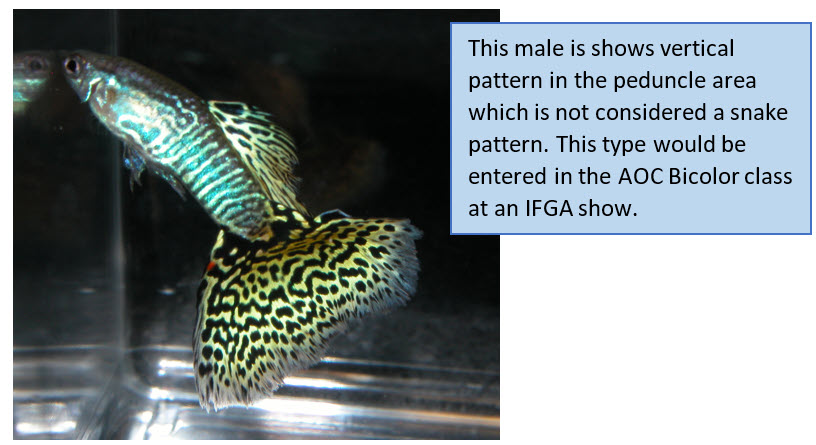
In judging the body color of a snakeskin guppy, a total of 8 points are possible; 4 points are assigned for coverage of snakeskin pattern and the other 4 points are assigned for color quality of the snakeskin pattern. Color coverage is judged on how well the body is covered with snakeskin pattern with a maximum of 4 points given to a fish with 100% coverage of snakeskin. The color quality is judged on how distinct the snakeskin pattern is. You can only give color quality points for areas that have a snakeskin pattern. Areas that are not snakeskin get no color points for coverage or quality. In the snakeskin class there is not a requirement that the body color must match the caudal color.
In judging the caudal color of a Snakeskin, a total of 11 points are possible; 6 points are assigned for coverage of caudal and the other 5 points are assigned for color quality of the caudal. In judging the dorsal color of a Snakeskin, a total of 8 points are possible; 4 points are assigned for coverage of the dorsal and the other 4 points are assigned for color quality. To get the maximum color coverage and quality points, the dorsal must completely match the caudal in color and pattern. A dorsal that doesn't match the caudal in color and pattern, will get zero (0) points for color. Solid snakeskins can have any solid-colored caudal and the variegated snakeskin caudal can have a bi-color pattern or multicolor pattern. Judging the caudal and dorsal color is the same as judging non-snakeskin Solid, Bicolor and Multi classes.
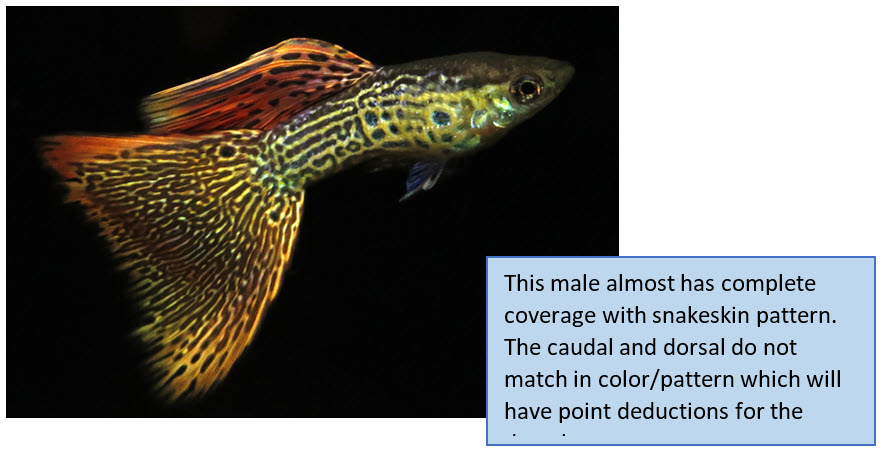
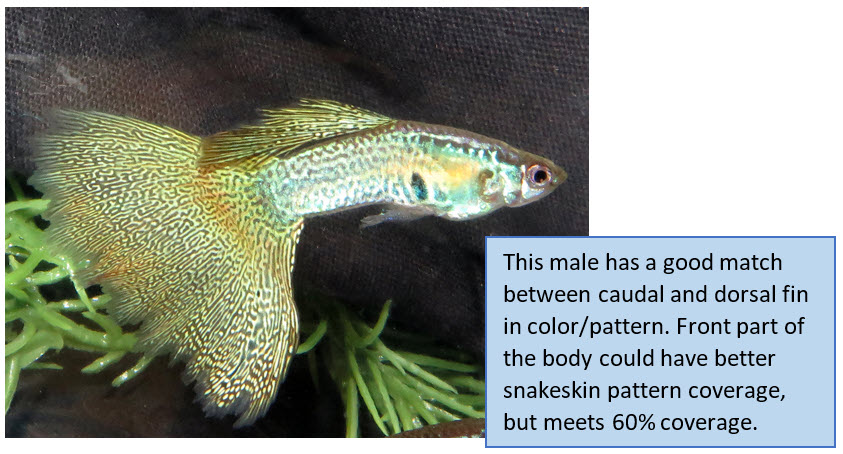
Arosette pattern is a pattern where the iridescent lines circle around an iridescent dot. You will often see rosette and chain-linked patterns on the same guppy as seen below.
|






